15 Companies make the cut in PortXL Maritime Acceleration Program
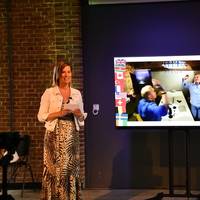
Fifteen companies from 11 countries were selected by a panel of industry experts, investors and entrepreneurs for the 6th PortXL acceleration program in Rotterdam. Starting in September, they will spend three months in Rotterdam. The PortXL team and its large network of expert mentors and partners will support them in validating their technologies and scaling their businesses. The program will end on December 2, when the signed contracts between innovators and corporate partners, such as Port of Rotterdam and Van Oord, will be announced at the Shakedown event.
ITOPF Addresses Brazil Oil Pollution
The International Tanker Owners Pollution Federation (ITOPF) is currently on-site in north-east Brazil attending the recent oil spill that has contaminated approximately 2,500 km of coastline in nine states.The source of the pollution remains unknown, although the Brazilian government has recently reported that they suspect a tanker passing along its coast in late July as being the polluter."Our involvement was requested directly by IBAMA, the Brazilian Institute of Environment and Renewable Natural Resources, on 16th September 2019, a couple of weeks after oil was first spotted washing up on shore," the not-for-profit marine ship pollution response advisers said.ITOPF is normally requested on-site by a shipowner or their insurer…
VLGC Freight Rates Recover
The Very Large Gas Carrier (VLGC) freight rates started to recover towards the end of the first quarter as U.S. consumption reverted to seasonally lower levels pushing U.S. LPG prices down, widening the geographical LPG price arbitrage between the U.S. and the Far East.According to BW LPG, the owner and operator of liquid petroleum gas (LPG) vessels, the recovery in VLGC freight rates was further strengthened by two occasions of fog and a temporary closure of the Houston Ship Channel due to fire and chemical spills.For 2019 we are optimistic that average VLGC rates will improve from the 2018 average of US$17,300 per day to a level above our cash break-even levels.
Trafigura Sends More Asian Gasoline to Americas
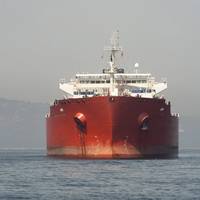
Commodity trader Trafigura is shipping this month a second newly built crude tanker with Asian gasoline onboard to South America amid strong demand in the West, four industry sources who closely monitor petrol trade flows said on Thursday.Although it is not uncommon for traders to use a brand new crude tanker of 150,000 deadweight tonnage (dwt) to ship clean fuels such as diesel, it is rare to use them for gasoline because of the sheer size."South America likely needs gasoline more than gasoil now.
Singapore, Malaysia Joint Chemical Spill Exercise at Sea
The Maritime and Port Authority of Singapore (MPA) and the Marine Department of Malaysia (MDM) conducted a joint chemical spill exercise at sea along the East Johor Strait to test the Joint Emergency Response Plan (ERP) for Chemical Spill Incidents in the East Johor Strait. 2Jointly developed by MPA, MDM, the National Environment Agency (NEA) and Johor Department of Environment (DOE), the objective of the joint ERP is to respond to and mitigate chemical accidents involving the seaborne transportation of hazardous chemicals along the East Johor Strait. The emergency response exercise is part of the bilateral cooperation programme under the Malaysia-Singapore Joint Committee on the Environment (MSJCE).
Spill Prevention & Response: Old Lessons, New Challenges
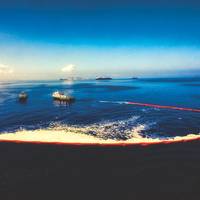
Emerging spill response trends fit into two big categories: technology and a combination of economic and social forces. Both will shape what comes next.Florida’s stunning Tampa Bay stands out as exactly the kind of place where you have to think about hazardous materials emergencies. It was 25 years ago, on August 10, 1993, that a freighter collided with two barges near the entrance of Tampa Bay, causing a fire and spilling over 32,000 gallons of jet fuel, diesel, and gasoline and about 330,000 gallons of heavy fuel, devastating beaches, wildlife and habitat.
Oil/Chemical Spills from Harvey Are Big, but Dwarfed by Katrina
More than 22,000 barrels of oil, refined fuels and chemicals spilled at sites across Texas in the wake of Hurricane Harvey, along with millions of cubic feet of natural gas and hundreds of tons of other toxic substances, a Reuters review of company reports to the U.S. Coast Guard shows. The spills, clustered around the heart of the U.S. oil industry, together rank among the worst environmental mishaps in the country in years, but fall far short of the roughly 190,000 barrels spilled in Louisiana in 2005 after Hurricane Katrina - the last major storm to take dead aim at the U.S. Gulf Coast. Harvey slammed ashore in Texas on Aug. 26, unleashing record flooding around Houston that destroyed countless homes, displaced around a million people and killed scores. The U.S.
Oil, Chemical Spills from Harvey Adding Up
More than 22,000 barrels of oil, refined fuels and chemicals spilled at sites across Texas in the wake of Hurricane Harvey, along with millions of cubic feet of natural gas and hundreds of tons of other toxic substances, a Reuters review of company reports to the U.S. Coast Guard shows. The spills, clustered around the heart of the U.S. oil industry, together rank among the worst environmental mishaps in the country in years, but fall far short of the roughly 190,000 barrels spilled in Louisiana in 2005 after Hurricane Katrina - the last major storm to take dead aim at the U.S. Gulf Coast. Harvey slammed ashore in Texas on Aug. 26, unleashing record flooding around Houston that destroyed countless homes, displaced around a million people and killed scores. The U.S.
USCG, EPA Cleaning up a Dozen Texas Chemical Spills after Harvey
The U.S. Coast Guard and the Environmental Protection Agency are working with Texas state regulators to clean up oil and chemicals spilled from a dozen industrial facilities after flooding from Hurricane Harvey, authorities said. The spills came from oil refineries, fuel terminals and other businesses, but EPA spokeswoman Terri White said it was not possible to provide an estimate for the amounts spilled. "Initial reports were based on observation," White said. Refineries owned by Valero Energy Corp in Houston, Motiva Inc in Port Arthur, and Exxon Mobile Corp in Baytown, were among the facilities that had reported spills, according to White. Representatives for those companies did not immediately respond to requests for comment.
Singapore Conducts Chemical Spill Drill
To test and demonstrate Singapore’s readiness to tackle oil and chemical spills, a multi-agency joint chemical spill exercise was conducted on Friday. Organized by the Maritime and Port Authority of Singapore (MPA) the exercise took place at the conclusion of the 10th International Chemical and Oil Pollution Conference & Exhibition (ICOPCE), held in conjunction with the Singapore Maritime Week 2017. ChemSpill 2017 comprised a tabletop management exercise at MPA's Port Operations Control Centre Vista and a full scale chemical and oil spill response equipment deployment. A total of 150 personnel from 25 agencies participated in the table top exercise and seaward exercise, located along Raffles Reserved Anchorage.
Update on Collision of Container Vessels Wan Hai 301, APL Denver
The Maritime and Port Authority of Singapore (MPA) continues to coordinate the containment and clean-up efforts of the oil spillage in Singapore’s waters following the collision of container vessels Wan Hai 301 and APL Denver. As of 5 January 2016, a total of 17 vessels and 222 personnel have been deployed. Progress of the clean-up is being made along the western coastlines of Pulau Ubin (OBS Jetty) and Nenas Channel. Some patches of oil were spotted off CAFHI Jetty and also along the shorelines of Pasir Ris Beach, Changi Point Ferry Terminal, Changi Sailing Club and Changi Beach in the early hours of the morning. Contractors were deployed to clean up the affected shorelines.
Boxship Collision Causes Oil Spill on Singapore-Malaysia border
Nearly 300 tonnes of oil spilled into the narrow strait separating Singapore and Malaysia after a collision between two container vessels, the Singapore Marine Port Authority (MPA) said on Wednesday. There were no reports of injuries and 12 anti-pollution craft had been sent to clean up the mid-sized oil spill, the MPA said in a statement. "Traffic in the East Johor Straits and Singapore's port operations remains unaffected", it said, adding that the spill had been contained off the western side of Singapore's Pulau Ubin island. The spill was caused by damage to the fuel tank of the container vessel APL Denver after a collsion with the WAN HAI 301 off Pasir Gudang Port in Johor, Malaysia late on Tuesday.
Changing Spill Risk in a Changing Arctic Landscape

Industry analyst and environmental consultant Dagmar Schmidt Etkin, PhD, takes a hard look at a rapidly shifting operational landscape in the Arctic. Always an honest broker of information, Etkin tells it like it is. Oil spill risk is present anywhere that oil is present in reservoirs, or is transported, consumed, stored, and handled in some way. The Arctic is no exception. Not only are there oil reserves in the Arctic, some of which are being or will soon be considered for exploration and production, there is also oil being transported as cargo or as fuel to Arctic communities.
Q88 LLC Expands Milbros Onboard Services
Q88 LLC introduced a global support program that coordinates quick response and expert consultation for chemical spills/incidents and medical emergencies occurring onboard vessels at sea. Known as Q88 Response Center, the new program leverages the resources of Spill Center, a leading provider of emergency response communication and incident management services, including environmental, technical and legal expertise. At the Q88 Response Center, trained personnel monitor telephone calls, dedicated email and web site requests for assistance on a 24/7 basis to gather the details, determine the issues and dispatch the right resources. In cases of major spills…
USCG R&D Team Up Agencies for Arctic Awareness
For a second year, members of the Coast Guard Research and Development Center, based in New London, Connecticut, make their way to the large ice floes of the Arctic Ocean to conduct research and test new equipment and technologies with the aim of expanding our knowledge and enhancing our ability to respond to potential hazards and emergencies brought on by increased vessel traffic through the region. It’s a mission as big and as important as the Arctic itself and one they couldn’t do alone. When RDC members depart for the Arctic, they do so aboard the Coast Guard Cutter Healy, a 420-foot icebreaker homeported in Seattle, Wash., that serves as a perfect platform for conducting Arctic research.
Canada Commissions Maritime Pollution Risk Study

Harper government announces pan-Canadian risk assessment study on marine safety. The Honourable Denis Lebel, Minister of Transport, Infrastructure and Communities, today announced that Transport Canada, in collaboration with the Canadian Coast Guard and Environment Canada, is commissioning a pan-Canadian risk assessment study on readiness to respond to ship-source spills in Canadian waters. “Our government is working to protect the safety of Canadians and the environment,” said Minister Lebel. “Canada depends on marine shipping for jobs, economic growth and long-term prosperity.
NOAA’s Newest Chart to Support Puerto Rico Maritime Economy
The Port of San Juan, which is experiencing a tremendous growth of maritime traffic and planning for more, received an additional economic boost today when NOAA debuted a new nautical chart that will make ocean-going vessel traffic safer and more efficient through San Juan Bay and the port area. “There is not only more traffic, but larger vessels are making San Juan their port call,” said Capt. John Lowell, director of NOAA’s Office of Coast Survey. “Mariners asked for NOAA’s help when they started finding themselves too far right of the port entrance,” Lowell said. “The San Juan harbor pilots knew the ship captains were at risk of endangering their vessels.
NOAA’s New Chart Supports Puerto Rico Maritime Economy
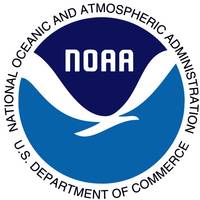
The Port of San Juan, which is experiencing a tremendous growth of maritime traffic and planning for more, received an additional economic boost today when NOAA debuted a new nautical chart that will make ocean-going vessel traffic safer and more efficient through San Juan Bay and the port area. “There is not only more traffic, but larger vessels are making San Juan their port call,” said Capt. John Lowell, director of NOAA’s Office of Coast Survey. “Mariners asked for NOAA’s help when they started finding themselves too far right of the port entrance,” Lowell said.
Don’t Get Burned By a Poorly Implemented Training Program

By Lawrence R. All vessel owners and operators will agree that employee training and education is of prime importance when it comes to running a safe operation. A considerable amount of time, effort, expense and other resources are usually allotted to such programs. Although some programs are implemented with very little fanfare, other programs are often rolled out with a great amount of attention and the highest of expectations. Unfortunately, many of these programs, after the initial enthusiasm has worn off, are often shifted to the back burner and rarely used.
Keys to Controlling Consequences in the Wake of a Marine Casualty
In the June issue of Marine News, we outlined the advantages of adding MOPS License Insurance protection to your deck and engineering officers' employee benefit package to help not only recruit but retain your key personnel in this very competitive employee environment. We pointed out that MARAD studies starkly declare that there are not enough qualified license mariners to meet the industry's needs and that 88% of respondents to a recent MARAD survey reported that licensed officer retention issues have negatively impacted their business operations. In response to the article, many Marine News readers responded that they take care of their licensed officers internally and react to any inquiries regarding marine casualties or reportable incidents as required.
EMSA, Cedre, Cefic Sign Agreement
The signature of this Memorandum of Understanding (MoU) covers the framework for co-operation between the three organizations in establishing a network of chemical experts called “Marine ICE" or "MAR-ICE network," which aims to strengthen information transfer on chemical substances involved in marine pollution emergencies in EU waters. The purpose of this network is to provide, upon request, the Member States of the European Union and the coastal states of the European Free Trade Association (EFTA) with remote product specific information on chemicals involved in marine pollution, by contacting experts in chemical companies who are familiar with the substance(s) involved.
Avoid Poorly Implemented Training Programs
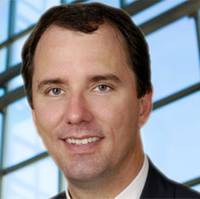
All vessel owners and operators will agree that employee training and education is of prime importance when it comes to running a safe operation. A considerable amount of time, effort, expense and other resources are usually allotted to such programs. Although some programs are implemented with very little fanfare, other programs are often rolled out with a great amount of attention and the highest of expectations. Unfortunately, many of these programs, after the initial enthusiasm has worn off, are often shifted to the back burner and rarely used.
ABS Notation for Well Test Ops Vessels, MODUs
ABS has issued a series of notations in support of critical well testing activities being undertaken by energy operators worldwide to determine the commercial nature of their reservoirs. The importance of well testing to determine the nature of reservoirs has become even more critical lately as ultra deepwater exploration with pre-salt fields now has operators exploring in water depths surpassing 10,000 feet. Not only is the depth a challenge but also the complexity of the reservoir structures. A vessel or mobile offshore drilling unit (MODU) with the equipment and capabilities to engage in well testing, either short-term or extended, is key in gathering onsite data to determine the size and quantity of the hydrocarbon potential.












